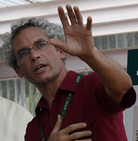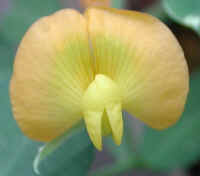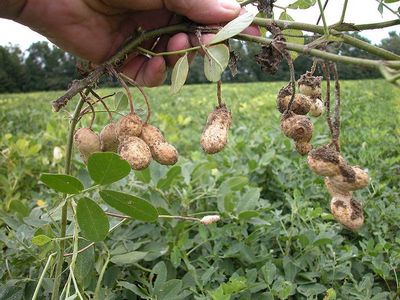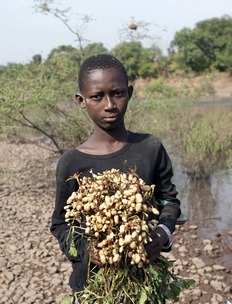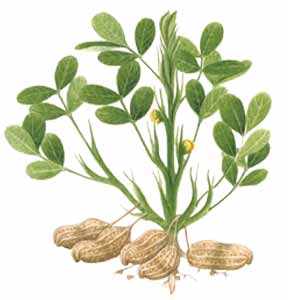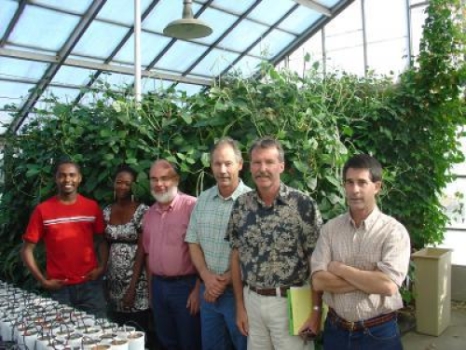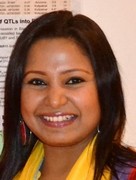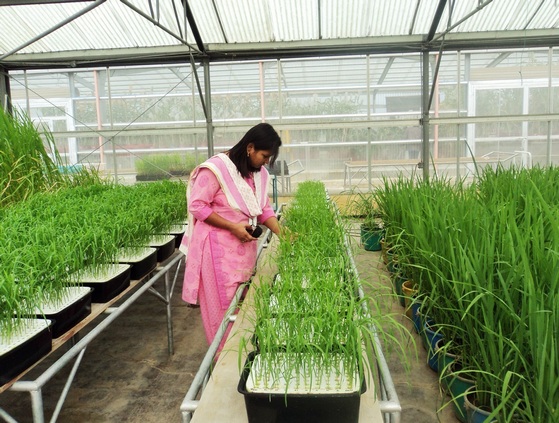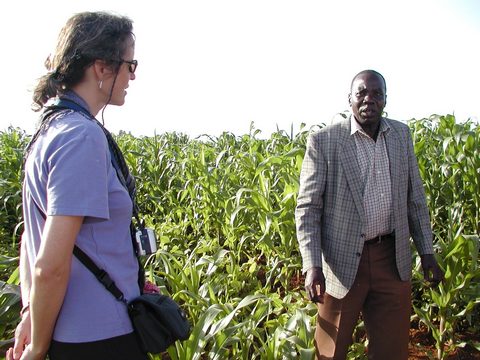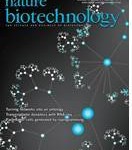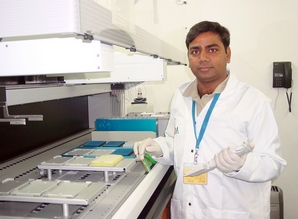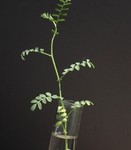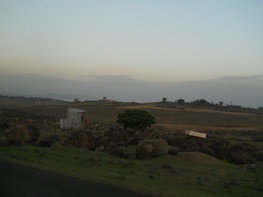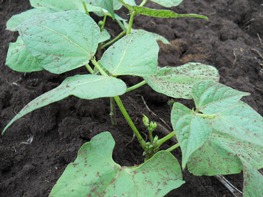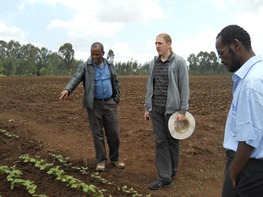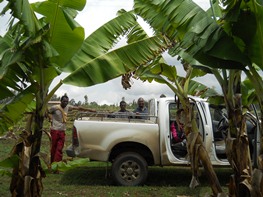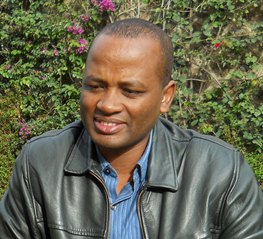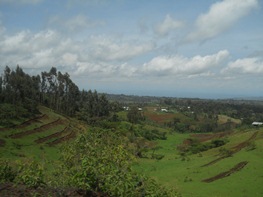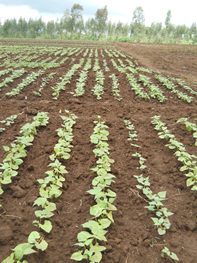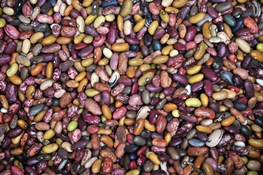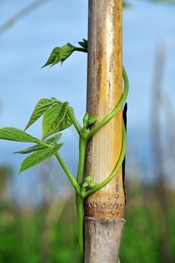Today, we travel to yet another sun-kissed spot, leaving California behind but keeping it legumes. We land in Africa for some ground truths on groundnuts with Vincent Vadez (pictured), groundnut research leader for the Tropical Legumes I (TLI) Project. Vincent fills us in on facts and figures on groundnuts and Africa – a tale of ups and downs, triumphs and trials, but also of ‘family’ alliances not feuds, and of problems, yes, but also their present or potential solutions. On to the story then! Read on to find out why groundnuts are…
….A very mixed bag in Africa
Groundnuts (Arachis hypogaea L), also called peanuts, are a significant subsistence and food crop in sub-Saharan Africa. There, groundnuts are grown in practically every country, with the continent accounting for roughly a quarter of the world’s production. Despite this rosy African statistic, problems abound: for example, nearly half (40 percent) of the of the world’s total acreage for groundnuts is in Africa, which dramatically dims the 25 percent global production quota.
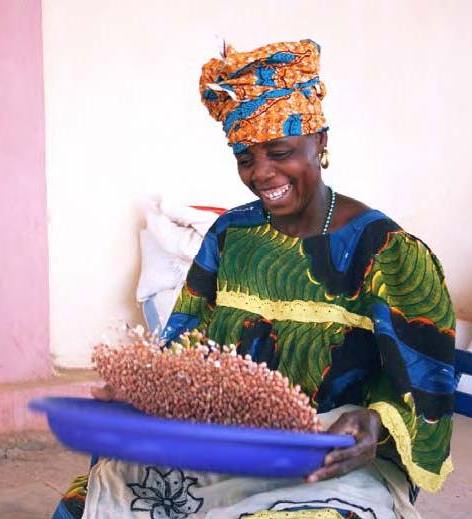
In Africa, groundnuts are typically cultivated in moderate rainfall areas across the continent, usually by women. (See editorial note* at the end of the story)
Clearly then, Africa’s yields are low, borne out by telling statistics which show African production at 950 kilos per hectare, in acute contrast to 1.8 tonnes per hectare in Asia.
…every year, yields worth about USD 500 million are lost”
What ails Africa’s production?
The main constraints hampering higher yields and quality in Africa are intermittent drought due to erratic rainfall, as well as terminal drought during maturation. And that is not all, because foliar (leaf) diseases such as the late leaf spot (LLS) or groundnut rosette are also taking their toll. Economically speaking, every year, yields worth about USD 500 million are lost to drought, diseases and pests. Plus, the seeding rates for predominantly bushy groundnut types are low, and therefore insufficient to achieve optimal ground cover. Thus, genetic limitations meet and mingle with major agronomic shortcomings in the cultivation of groundnuts, making it…
…. A tough nut to crack
Groundnuts are mostly cultivated by impoverished farmers living in the semi-arid tropics where rainfall is both low and erratic.

. Tough it may be for crop scientists, but clearly not too tough for these two youngsters shelling groundnuts at Mhperembe Market, Malawi.
“To help double the productivity of this crop over the next 10 years, we need to improve groundnuts’ ability to resist drought and diseases without farmers needing to purchase costly agricultural inputs,” says Vincent.
But the crop’s genetic structure is complex, plus, for resistance to these stresses, its genetic diversity is narrow. “Groundnuts are therefore difficult and slow to breed using conventional methods,” says Vincent. And yet, as we shall see later, groundnuts are distinctly disadvantaged when it comes to molecular breeding. But first, the good news!
…wild relatives have genes for resisting the stresses… molecular markers can play a critical role”
Why blood is thicker than water, and family black sheep are valued
Kith and kin are key in groundnut science. Vincent points out that groundnuts have several wild relatives that carry the necessary genes for resisting the stresses – especially leaf diseases – to which the crop is susceptible. These genes can be transferred from the wild cousins to the cultivated crop by blending conventional and molecular breeding techniques. But that is easier said than done, because cultivated groundnuts can’t cross naturally with their wild relatives owing to chromosomic differences.
“In modern breeding, molecular markers can play a critical role,” says Vincent. “Using markers, one can know the locations of genes of interest from an agronomic perspective, and we can then transfer these genes from the wild relatives into the groundnut varieties preferred by farmers and their markets.”
[The] ‘variegated’ partnership has been essential for unlocking wild groundnut diversity…”
Partnerships in and out of Africa, core capacities
“Partners are key to this work,” says Vincent. The groundnut work is led by the International Crops Research Institute for the Semi-Arid Tropics (ICRISAT), with collaborators in the target countries, which are Malawi (Chitedze Agricultural Research Centre), Senegal (Institut sénégalais de recherches agricoles ‒ ISRA) and Tanzania (Agricultural Research Institute, Naliendele), Moving forward together, continuous capacity building for partners in Africa is part and parcel of the project. To this end, there have been several training workshops in core areas such as molecular breeding and phenotyping, farmer field days in the context of participatory varietal selection, as well as longer-term training on more complex topics such as drought, in addition to equipping the partners with the critical infrastructure needed for effective phenotyping.
Further afield out of Africa, Vincent’s team also collaborates with the Brazilian Agricultural Research Corporation (EMBRAPA), France’s Centre de coopération internationale en recherche agronomique pour le développement ‒ CIRAD, and USA’s University of Georgia.
This ‘variegated’ partnership has been essential for unlocking the wild groundnut diversity when about 12 years ago the EMBRAPA team successfully generated a number of ‘synthetic’ groundnuts from their wild relatives. Unlike the wild groundnuts, these synthetic groundnuts can be crossed to the cultivated type, bringing with them treasure troves of beneficial genes pertaining to the wild that would be otherwise unreachable for the cultivated varieties. Taking this one step further, the CIRAD‒ISRA team, in a close North‒South partnership, has used one of the synthetics from the Brazilian programme to generate new genetic diversity in the groundnut cultivar Fleur11. They are using additional synthetics from ICRISAT to further enlarge this genetic diversity in cultivated groundnuts.
These techniques and tools provide signposts on the genome of varieties for characteristics of importance”
A world first for an ‘orphan’, goals achieved, and what next
Among other goals, the team notably achieved a world first: “To produce the first SSR-based genetic linkage map for cultivated groundnuts!” declares Vincent. SSR stands for simple sequence repeat. The map was published in 2009, followed later on by a groundnut consensus map in 2012.
But what do these maps and their publication mean for groundnut production? Vincent explains: “These techniques and tools provide signposts on the genome of varieties for characteristics of importance ‒ for instance, resistance to a disease ‒ and these are used in combination to speed up the development of groundnut varieties that are more resistant to the stresses found in the harsh environments where most of the tropical world’s poor farmers live. Accelerating development means quicker delivery to farmers who are at high risk of going hungry. TLI Phase I produced synthetic groundnuts with new genes for disease resistance.”
In Phase II of the TLI Project which terminates in mid-2014, the team has continued to identify new genetic and genomic resources, for instance new sources of drought resistance from the germplasm and which are currently being used in the development of new breeding stocks. What is significant about this is that groundnuts ‒ like most other members of the legume family ‒ do not have much in the way of genomic and molecular-genetic resources, and are in fact consequently referred to in some circles as ‘orphans’ of the genome revolution. The focus has also been on resistance to rust, early and late leaf spot, and rosette – all economically critical diseases – by tapping the resilience of GBPD4, a cultivar resistant to rust and leaf spot, and introducing its dual resistance to fortify the most popular varieties against these diseases. The team also hopes to scale up these promising examples.
We believe this team is firmly on the way to fulfilling their two-fold project objectives which were: (1) to develop genomic resources and produce the first molecular-breeding products of the crop by injecting disease resistance (from TLI Phase I work) into farmer- and market-preferred varieties; and, (2) to lay the foundation for future marker-assisted recurrent selection (MARS) breeding by tapping on newly identified sources of drought tolerance.
the genetic stocks that hold the most promise to overcome leaf disease are found in the wild relatives… A thorough reflection is needed to combine good genetics with sound agronomic management”
The future
But the team is not resting on their laurels, as the work will not stop with the fulfillment of project objectives. In many ways, their achievements are in fact just the beginning. The new breeding stocks developed during TLI Phase II need to be evaluated further for their drought tolerance and disease resistance prior to their deployment in breeding programmes, and this activity ‒ among others ‒ is included for the next phase of the work in the proposed Tropical Legumes III project. In particular, the genetic stocks that hold the most promise to overcome leaf disease are found in the wild relatives. Thus, the existing materials need to be fully exploited and more need to be produced to cover the full breadth of potential stresses. Vincent adds “Of course an increasing part of the efforts will be about assuring quality evaluation data, meaning we must continue to significantly enhance the capacity ‒ both human and physical ‒ of our partners in target countries. Last but not least, the good wheat and rice cultivars that directly arose from the green revolution would have been nothing without nitrogen fertiliser and irrigation.” Vincent adds that the same applies to groundnuts: they are cultivated in infertile soil, at seeding rates that are unlikely to optimise productivity.
For this reason, and others explained above, “A thorough reflection is needed to combine good genetics with sound agronomic management,” Vincent concludes, stressing the importance of what he terms as ‘looking beyond the fence’. Vincent’s parting shot, as our conversation draws to close: “In fact, I have grown increasingly convinced over the past year that we probably overlook those agronomic aspects in our genetic improvements at our peril, and we clearly need a re-think of how to better combine genetic improvement with the most suitable and farmer-acceptable agronomic management of the crop.”
Much food for thought there! And probably the beginnings of an animated conversation to which a groundnut crop model, on which Vincent and team are currently working, could soon yield some interesting answers on the most suitable genetic-by-management packages, and therefore guide the most adequate targets for crop improvement.
Links
- Photo-story on Flickr
- Groundnut research in Africa
- Groundnut research Videos | Slides | in Tanzania
- Legumes Research Initiative | InfoCentre
- Journal articles: advances in groundnut genomics (2012) | Orphan legume crops enter the genomics era! (2009)
- Ever wondered why the name groundnuts? Wonder no more, with this answer from the underground
*Editorial note: Erratum – Photo changed on April 8 2014, as the previous one depicted chickpeas, not groundnuts. We apologise to our readers for the error.







